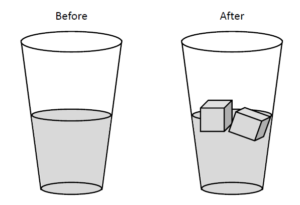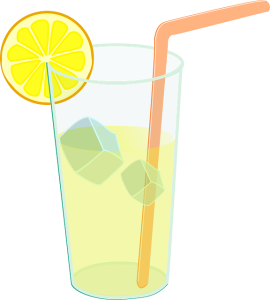Purpose
[stextbox id = “info”] To give students an opportunity to draw a model that explains condensation.[/stextbox]
Description
[stextbox id = “info”] Ask students: If you had super strong glasses, more powerful than the most powerful microscope, what do you think you would see in and around a glass of water before and after ice is added? Have students draw pictures for both before and after in their science notebooks or using this task sheet. [Task instructions for pilot teachers.]
[/stextbox]
Questions to Ask Students
[stextbox id = “info”]- Describe your drawings. What does each part represent?
- How do your drawings explain where the water on the outside of the glass comes from?
Student Thinking
[stextbox id = “info”] Some students’ drawings will represent water as continuous (that is, they will not draw water particles), even in the gas phase (Benson, Wittrock, & Baur, 1993; Nakhleh & Samarapungavan, 1999; Renström, Andersson, & Marton, 1990; Séré, 1986). If students draw particles, look for:- Size and shape of particles in different states. Some students believe size and shape change as the states change (Aydeniz & Kotowski, 2012; Özmen, 2011; Özmen & Kenan, 2007; Tsai, 1999). For example, some think water particles are bigger in the gas phase than the solid phase.
- Number of particles. Some students believe that the number of particles changes as the states change. (Lee, Eichinger, Anderson, Berkheimer, & Blakeslee, 1993; Osborne & Cosgrove, 1983; Russell et al., 1989; Tytler, 2000). For example, some students believe particles disappear when water evaporates.
Implementation Tips
[stextbox id = “info”]- Students will likely have inaccurate drawings even after completing Student Experiences 1 and 2. Reviewing their drawings will likely reveal what misconceptions still remain.
- Have students keep their drawings, for example, in their science notebook, to revisit again later (or collect and keep them yourself).
